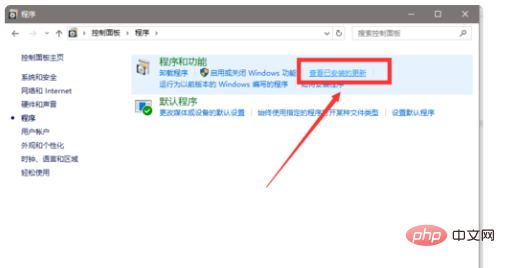Home >Common Problem >What to do if installed updates cannot be uninstalled

What should I do if the installed update cannot be uninstalled?
First we open the "Action Center" of win10, which is located in the lower right corner. Then click "All Settings."

Enter the settings interface and select "Windows Update". When entering, it will automatically check whether there are new updates. It doesn't matter if we wait here, just click " Update history".

In "Update History" we can see our historical update records, record the time period and the name of the update that we need to uninstall. The editor here selects "(Windows 10 Version 1607 Update for x64-based systems (KB3176936))" and then click "Uninstall Update".

At this time, you will jump to the "Installed Updates" interface of the control panel, find the update name you just remembered, right-click and select "Uninstall".

Then it will confirm whether you are sure to delete the update, click "Yes" to start uninstalling the update, and after the uninstallation is complete, you will be given the option to restart the application settings. Just restart it.
Method/Step 2
In the fourth step, you will automatically jump to the control panel. You can also enter the operation manually. The old method: shortcut key "win x" and select "Control Panel" ".

After entering the "Programs" interface, select "View Installed Updates" to directly enter the "Installed Updates" interface we mentioned before.

The above is the detailed content of What to do if installed updates cannot be uninstalled. For more information, please follow other related articles on the PHP Chinese website!